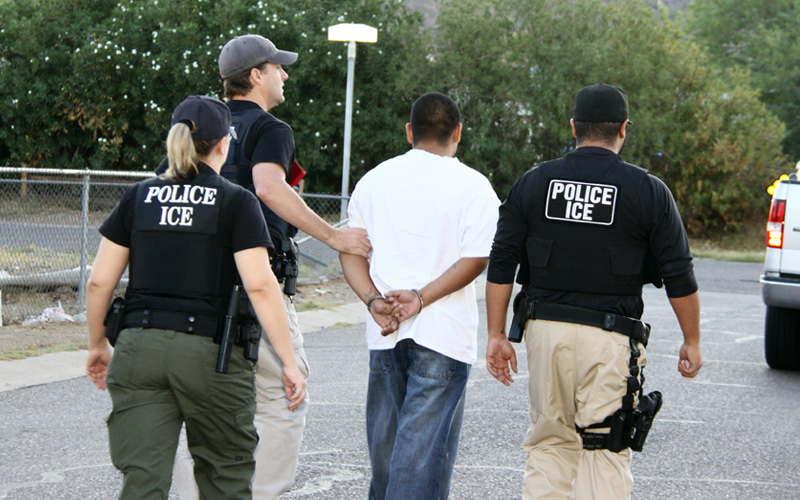Last Friday, following weeks of intensive dialogue, the U.S. Senate passed S.744, a landmark immigration bill that intends to transform border security, while at the same time, enable 11 million undocumented immigrants to take their fist step in their journey to U.S. citizenship.
After a contentious debate, it was the 68 "yes" ballots. All 52 Democrats as well as 14 Conservatives and two independents were responsible for passage of the Senate Bill.
The key elements of the New US Senate immigration bill:
1. PATH TO CITIZENSHIP
The 11+ million people living in the U.S. unlawfully could receive "registered provisional immigrant status" six months after enactment of the bill as long as:
(1) The Homeland Security Department has formulated border security and fencing plans, as specified in the bill.
(2) Applicants would have to establish that they arrived in the U.S. on or before December 31, 2011 and maintained continuous physical presence since then.
a. Family members to be included - was physically present in the United States on or before December 31, 2012
(3) A felony conviction or three or more misdemeanors disqualifies the applicant.
(4) A $500 fine will be imposed on top of the immigration fees.
(5) PAYMENT OF TAXES- the applicant has satisfied any applicable Federal tax liability.
Once Provisional Status is granted:
The applicant could work and travel in the U.S. but would be ineligible for most federal benefits, including welfare and health care
Provisional legal status lasts six years and is renewable for another six years for $500.
APPLICATION PERIOD
a. INITIAL PERIOD- A 1-year period beginning on the date on which the final rule is published.
b. EXTENSION- may be extended the period for an additional 18 months.
After 10 years in provisional status, immigrants will qualify for a green card (lawful permanent resident status) if:
1. They are current on their taxes and pay a $1,000 fine,
2. They have maintained continuous physical presence in the U.S.,
3. The meet work requirements (worked minimum 10 months each year) and learn English;
4. All people on line in wait to immigrate legally as of the date of enactment of the legislation must have been processed; and
5. The border security requirements have to be satisfied
2. Dream Act Children
Those who were brought to the country as youths would be able to get green cards in five years, and citizenship immediately thereafter.
3. Deportation Cases
- An alien who departed from the United States while subject to an order of deportation and who is outside of the United States, or who has reentered the United States illegally after December 31, 2011 shall not be eligible to file an application for registered provisional immigrant status.
- If qualified applicant is in deportation proceeding an application can be filed and the court case will be terminated.
- People deported for noncriminal reasons can apply to re-enter in provisional status however, they must have a spouse or child who is a U.S. citizen or permanent resident, or if their child had been brought to the U.S. as a child (Similar to President Obama's "Deferred Action for Childhood Arrivals."
5. Family Reunification
Current law permits U.S. citizens to sponsor spouses, children and siblings to come to the U.S. with limits on some categories. However, Lawful Permanent Resident (LPR) can file for spouse and children, but there is a waiting list, which take more than 2 years. The bill eliminates that delay and speeds up the process as it, it were a citizen applying for his family.
The bill would also bar citizens from sponsoring their siblings and would allow them to sponsor married sons and daughters only if those children are under age 31.
6. FARM WORKERS - BLUE CARD STATUS.
The Bill creates a new category for Farm workers - The Blue Card
Requirements for Blue Card Status-
- Performed agricultural employment in the United States for not fewer than 575 hours or 100 work days during the 2-year period ending on December 31, 2012; or
- Is the spouse or child of an alien who is granted blue card status.
7. BORDER SECURITY
Republicans demanded stronger border security measures in return for agreeing to a path to citizenship for the 11 million people in the U.S. illegally.
The bill sets out a sequence of requirements that must be realized over 10 years before anyone here illegally can acquire a green card. These include:
(1) Doubling the number of Border Patrol agents stationed along the U.S.-Mexico border, to at least 38,405.
(2) Completing 700 miles of pedestrian fencing along the border, which would require approximately 350 new miles of fencing. ( A similar requirement that was imposed in the 1986 Amnesty)
(3) Installing a host of new security measures including surveillance towers, camera systems, radiation detectors, ground sensors, drones, mobile surveillance systems, airborne radar systems, helicopters, planes and ships.
(4) Put into practice a system for all employers to verify electronically their workers' legal status
(5) Establishing a secure electronic system to track people leaving U.S. airports and seaports.
The Goal of Border Security
- ·100 percent surveillance of the border with Mexico and ensure that 90 percent of attempts at crossing would be caught and sent back.
- If within five years, the goals of a 90 percent effectiveness is not met, a Southern Border Security Commission comprised of border-state governors and others would resolve how to achieve these goals.
9. Business Visas
(1) Low Skill Workers - A new W visa would be created that allow up to 200,000 low-skilled workers a year to enter the country and be employed in construction, long-term care, hospitality and other industries.
(2) Visas For Startups and Investors - A new visa called INVEST visas are open to startup entrepreneurs who can establish they are creating jobs, have a significant investment in the company.
(3) Increase in Skilled Visas - The cap on H-1B visas (high-skilled employees) is almost doubled, from 65,000, to 110,000, with a maximum of 180,000 in the future.
(4) An unlimited number of certain physicians, professors, researchers and other people of "extraordinary ability."
(5) STEM Graduates - Up to 25,000 more visas are available to immigrants who have earned a master's degree or above in science, technology, engineering or math (STEM).
(6) Employer Verification. Within four years, all employers must put into action E-Verify, authenticate electronically their workers' legal status. Noncitizens would be required to show photo ID that matches with a photo in the E-Verify system.
`








